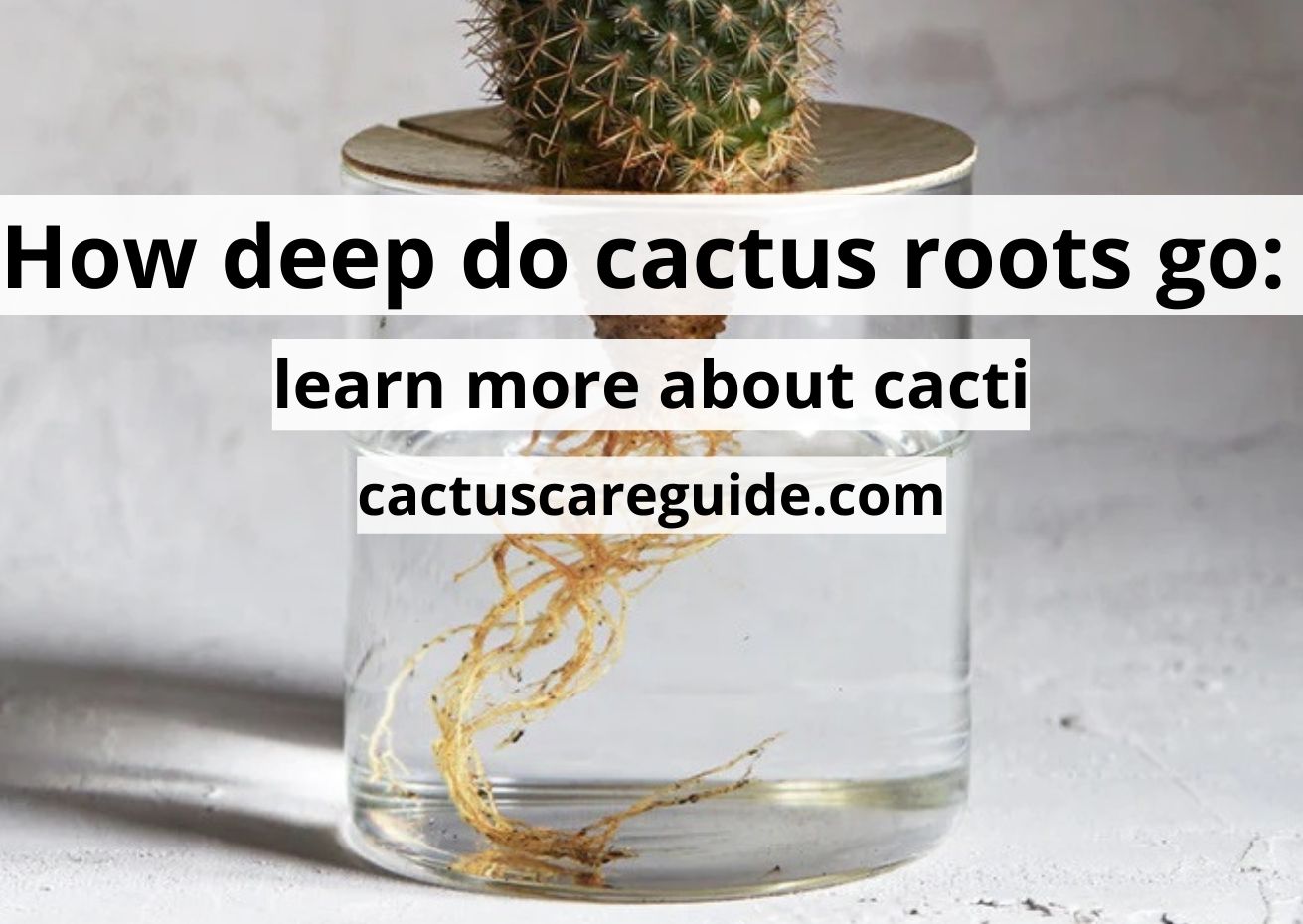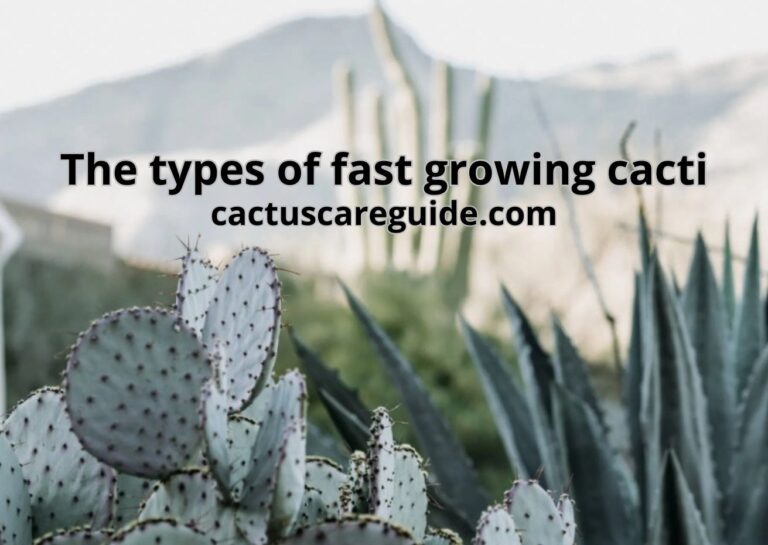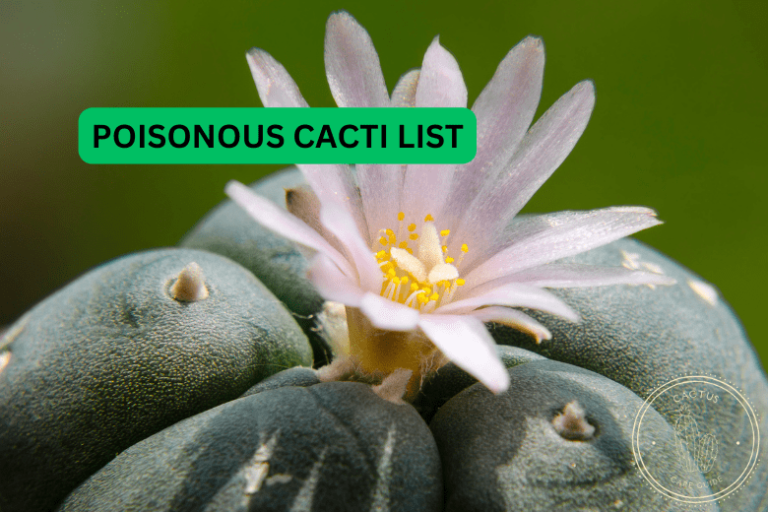How Deep Do Cactus Roots Go: Learn More About Cacti
How deep do cactus roots go? The cactus plants, known for their ability to thrive in harsh environments, owe much of their success to their unique root system.
The fascinating world of cactus roots is a tale of adaptation and survival, featuring deep roots that plunge into the soil’s depths and shallow roots that stretch out near the soil’s surface. How deep the cactus roots grow and even how they grow will depend on the cactus species.
These root systems play a vital role in ensuring the plants’ resilience in the arid landscapes they call home.
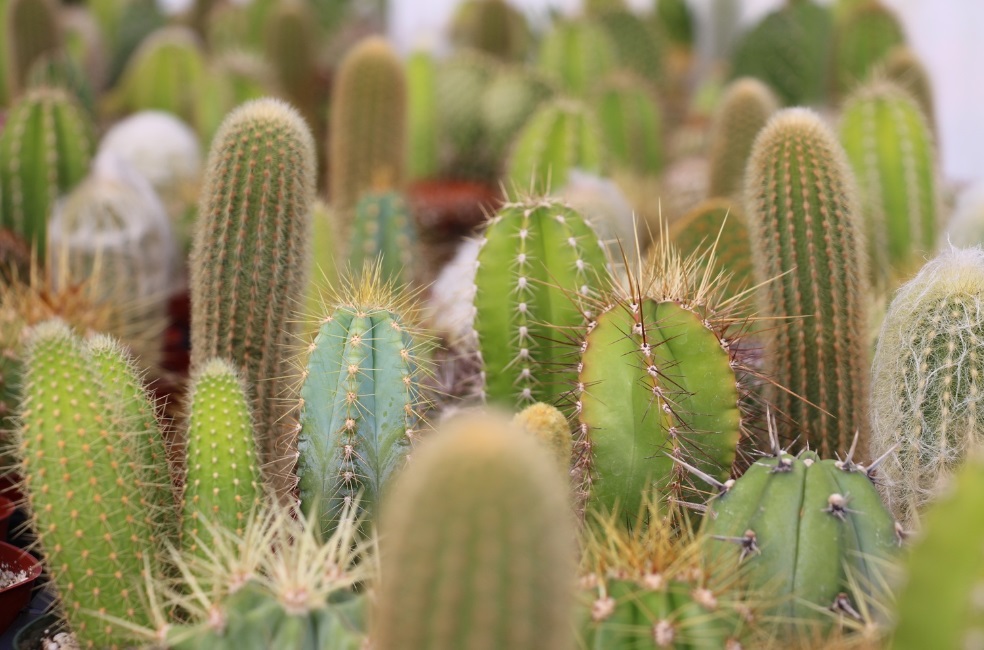
The varied cactus root system
Most cactus roots grow in diverse ways, responding to the specific challenges presented by their surroundings.
Some cactus species, like the Carnegiea Gigantea, can develop a deep root system that can extend several feet below the surface. These deep roots tap into hidden water reserves, providing the cactus plant with a lifeline during dry spells. On the other hand, cacti with shallow root systems, such as the Prickly Pear Cactus (Opuntia spp.), spread out horizontally near the soil’s surface.
These shallow roots are adapted to capturing fleeting moisture from rain and dew, allowing the plant to quickly absorb precious water. Most cacti have fibrous root systems that spread and are made of connective tissue.
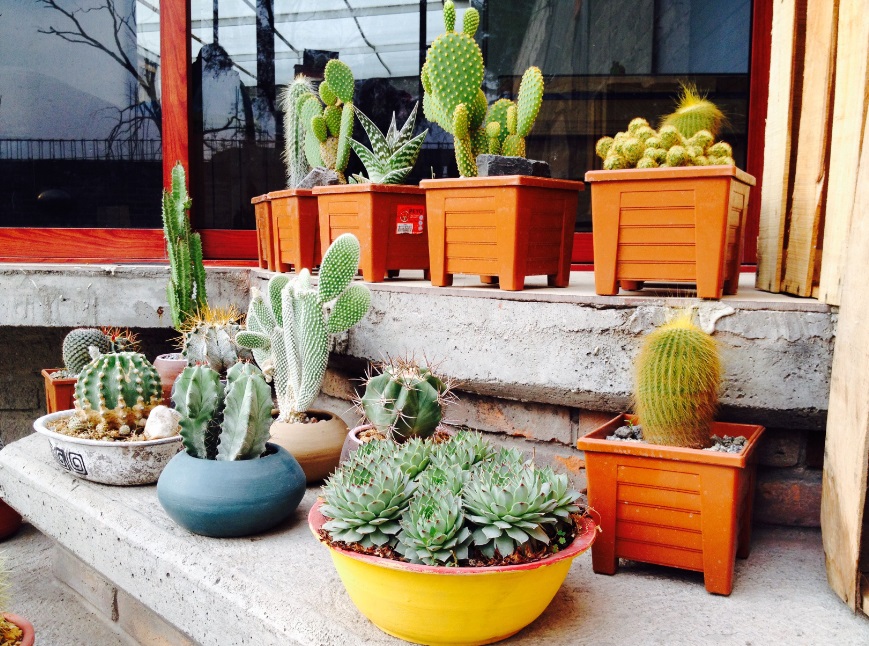
Lateral roots
The root system of cactus is a masterpiece of evolution, often comprising shallow or deep roots. Lateral roots, extending horizontally from the main root, are common in many cactus species.
These lateral roots are skilled gatherers of surface moisture, making them particularly effective in regions where water availability is sporadic.
From shallow to deep roots
The depth of the roots of cactus varies significantly between species. While some boast deep roots reaching several feet into the ground, others feature a more shallow system.
The distinction between shallow or deeper roots is often influenced by the species’ habitat and the resources available in the soil.
The shallow roots spreaders
Cacti like the Prickly Pear cactus often possess a shallow root system that stretches out just below the soil’s surface.
The roots of Prickly Pear Cacti often referred to as fibrous root system, have evolved to capitalize on brief rain showers and condensation. They can absorb moisture before it evaporates under the intense desert sun.
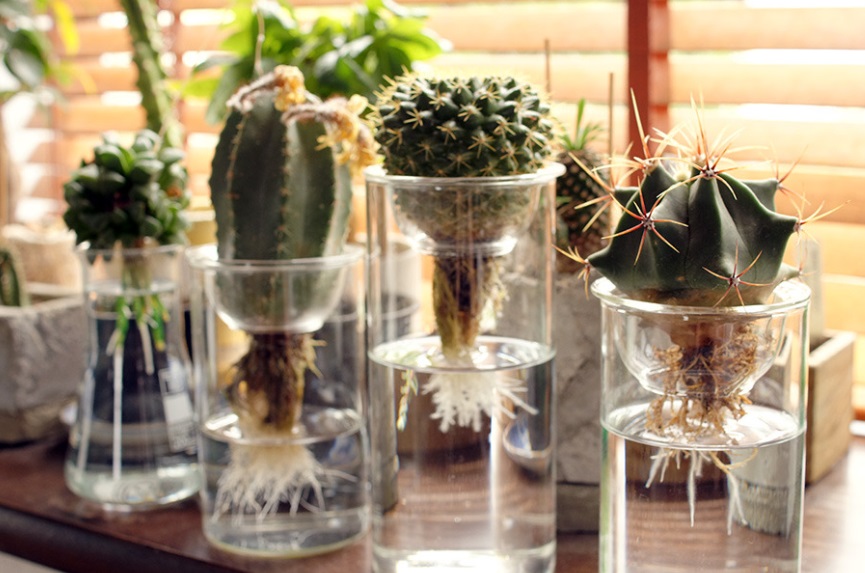
Aerial roots and adventitious roots
Some cacti go beyond the conventional below-ground roots and develop aerial roots.
These aerial roots emerge above the soil’s surface and help anchor the plant while also aiding in moisture absorption. Cacti might develop adventitious roots, which grow from unexpected places like stems and branches, enhancing the plant’s capacity to gather nutrients.
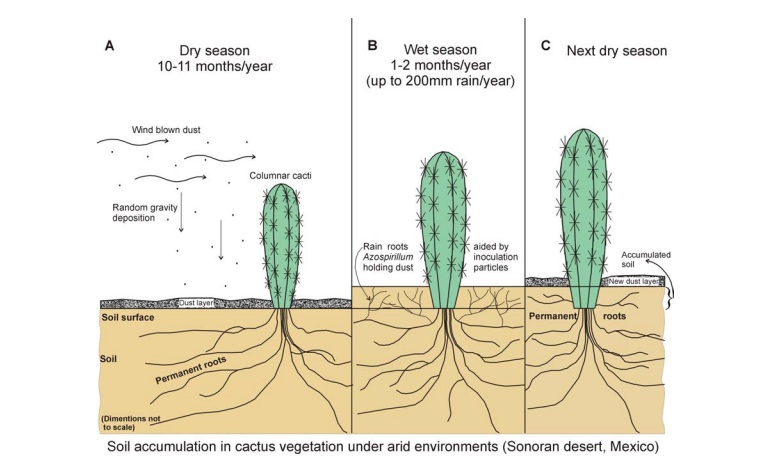
Exploring deeper depths
Deep-rooted cacti, such as those with tuberous roots, are masters at accessing underground water sources.
These roots can reach into layers of soil that retain moisture longer than the surface soil. This ability to tap into hidden water reservoirs is a remarkable survival strategy for cacti in regions where rainfall is sporadic.

Cacti vs other desert plants
Cactus roots differ from many other desert plants. While some desert plants spread their roots widely near the soil surface, cacti have evolved diverse strategies to cope with the desert’s challenges.
This unique root architecture is a testament to their specialization for survival in arid conditions.
Symbiotic relationships and root health
Cacti plants can develop mutualistic relationships with fungi in their root system. These mycorrhizal fungi extend the reach of the roots of the cactus, enhancing their capacity to absorb nutrients and water from the soil. Such symbiotic partnerships contribute to the overall health and resilience of cacti plants.
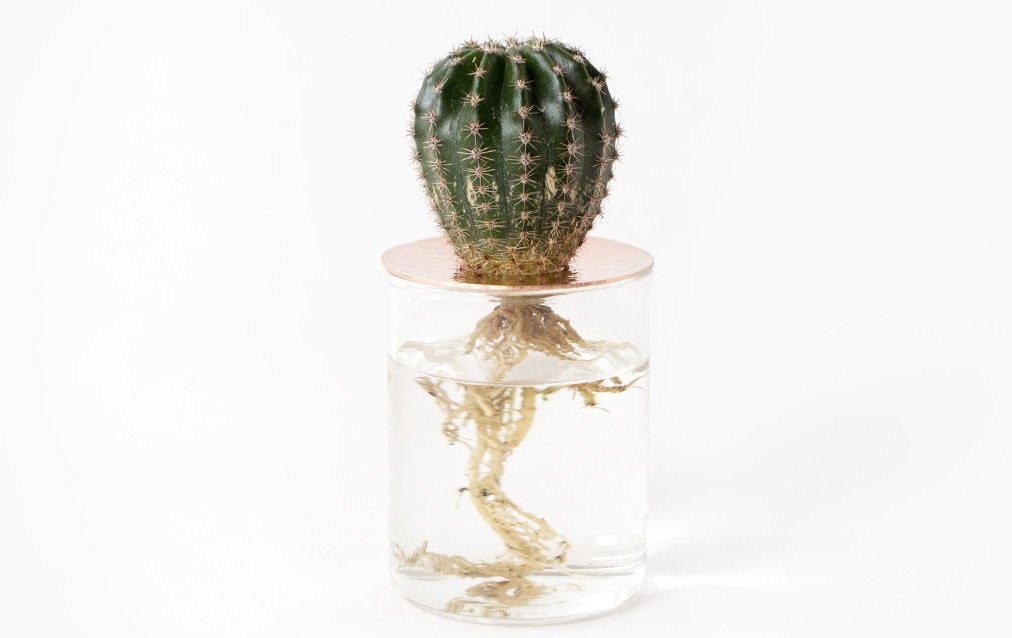
Cactus root invasiveness
While some cactus roots grow deep, they are not inherently invasive. Unlike some other plants, the roots of cacti do not aggressively seek out water sources or disrupt surrounding vegetation. Their deep roots are more about survival than conquest.
In search of stability
Cacti, especially columnar cacti, have an evolved deep root system to provide stability against harsh desert winds.
These roots anchor the towering cacti in place, preventing them from toppling over during sandstorms or gusty conditions.
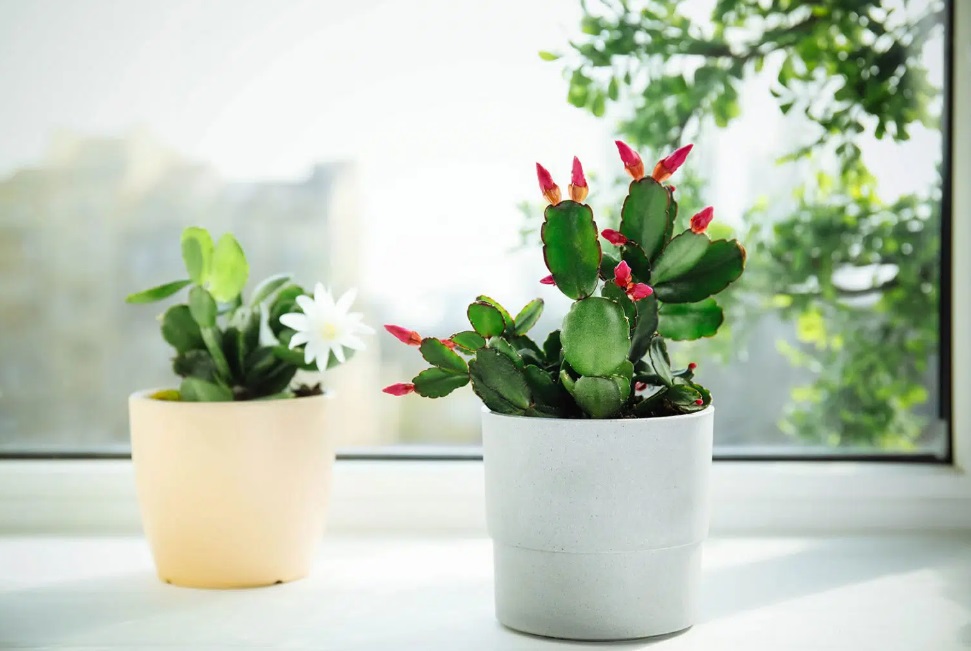
The role of Christmas cacti
Even Christmas cacti, which are not true desert cacti, possess their own unique root system.
These cacti are epiphytes, growing on other plants rather than in soil. Their roots cling to surfaces, extracting moisture and nutrients from the surrounding environment.
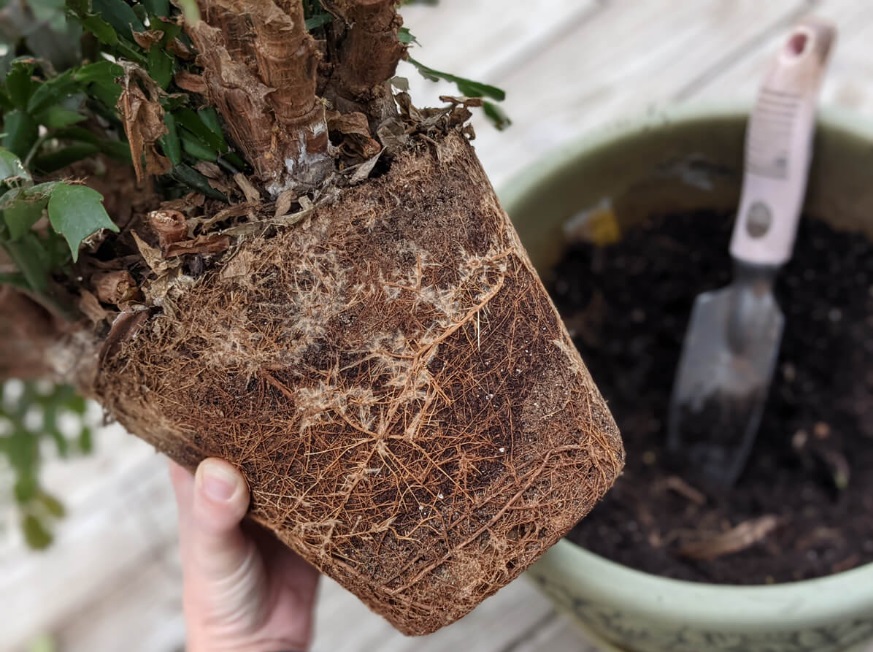
Root rot threats
The cacti’s root system is not immune to challenges.
Root rot, caused by fungal infections favored by excessively wet conditions, can threaten the health of the roots of cacti. To avoid the problem of root rot, make sure you well-drain the soil.
Growing cacti roots
When growing cactus plants, understanding their root systems is key to success.
Proper soil conditions, appropriate pot sizes, and suitable watering practices mimic the plants’ natural habitat and encourage healthy root development.
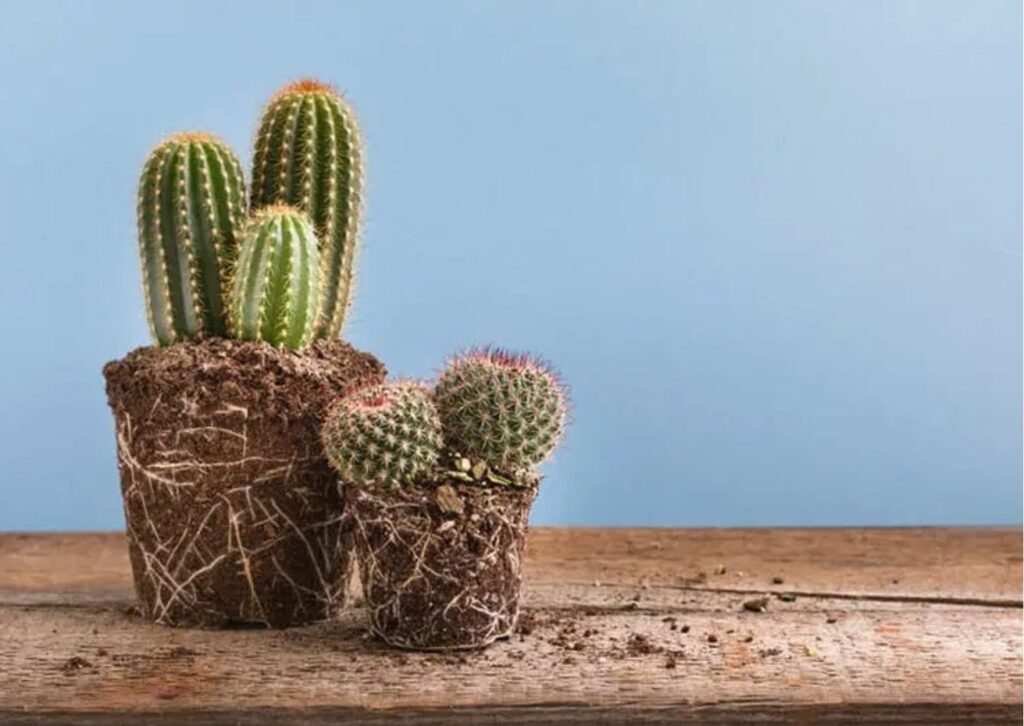
Root conservation
In the face of climate change, understanding the cactus root system takes on added importance.
Conservation efforts should take into account the diversity of cacti roots and their adaptations, ensuring the survival of these unique plants.

Fibrous roots and water capture
Cactus root system, including fibrous roots, are intricate designs crafted by nature to capture water in their arid habitats. Fibrous roots are a form of root that can stretch up to 15 feet out from the plant.
The fibrous roots venture out near the surface of the soil, efficiently gathering moisture from fleeting rain and even dew, ensuring the survival of the plant in the desert’s water-starved environment.
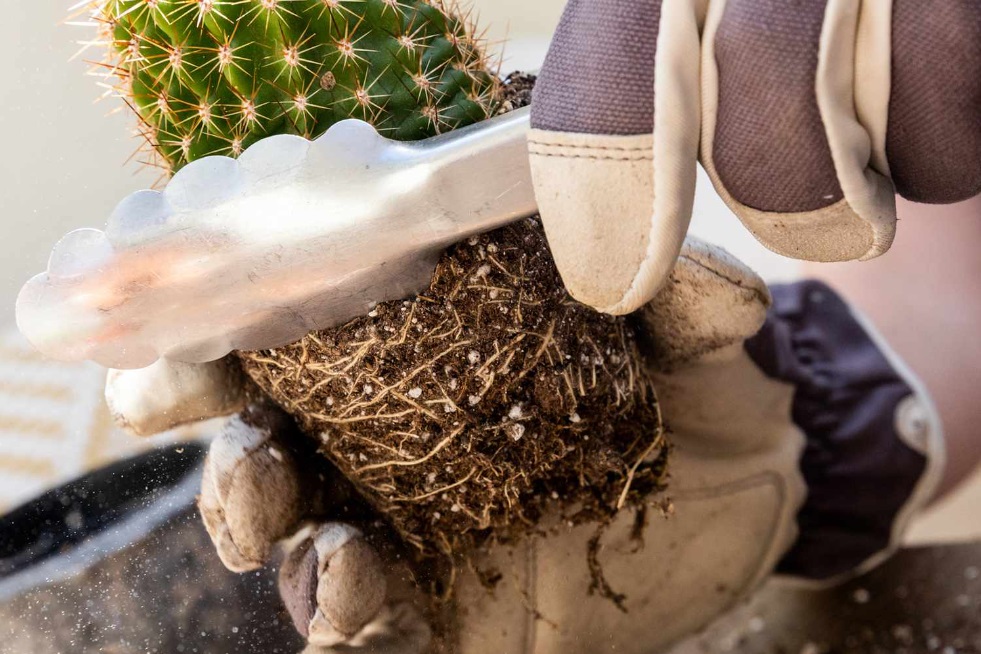
Beyond the Desert: Christmas cactus
While desert cacti often steal the spotlight, other cacti species have their own unique root stories.
Take the Christmas cactus plant, for instance, a popular houseplant. This cactus thrives in rainforests, adapting to a different set of challenges. Its root system demonstrates versatility, making use of its epiphytic nature by attaching to trees or rocks and absorbing moisture from the humid air.

Are cactus roots invasive?
The notion of the roots of the cactus being invasive can be misleading. While some invasive plants aggressively compete for resources and disrupt ecosystems, cacti’s root systems have evolved to efficiently access water without overtaking their surroundings.
Their invasiveness is driven by necessity, ensuring their own survival rather than domination.

The role of microorganisms in root health
The success of the cactus plants in harsh desert environments is not a solitary feat but a collaborative effort between the plants and the microorganisms that inhabit their root systems. These microscopic partners play a crucial role in maintaining the health and resilience of cactus roots, highlighting the intricate web of life that thrives beneath the desert’s surface.
- The Mycorrhizal Marvels. Mycorrhizal fungi are key players in the cacti root health saga. These fungi establish partnerships with cacti by attaching to their roots. In return for sugars produced by the cacti, the fungi enhance the root system’s ability to absorb water and nutrients from the soil.
- A Reach Beyond Limits. Mycorrhizal fungi effectively extend cacti roots’ reach, enabling them to access resources that might otherwise be out of grasp. This is particularly valuable in arid environments, where even a slight increase in water and nutrient absorption can make a significant difference.
- Enhancing Drought Resistance. The mycorrhizal alliance goes beyond resource acquisition. Studies suggest that mycorrhizal fungi can also enhance a cactus plant’s drought resistance by improving its water-use efficiency. This adaptation is vital in an environment where water is scarce and sporadic.
- Bacterial Bounty. While mycorrhizal fungi take the spotlight, bacteria are also essential contributors to cacti root health. These microscopic beings form a community around cacti roots, aiding in nutrient cycling, disease suppression, and even promoting root growth.
- Balancing Act of Nutrient Uptake. Microorganisms help cacti achieve a delicate balance in nutrient uptake. In nutrient-poor desert soils, cacti rely on these microbial allies to break down organic matter, releasing nutrients that the plants can then absorb.
- Protection Against Pathogens. Microorganisms in the root zone serve as a line of defense against pathogens. They can outcompete harmful microbes, preventing them from infecting the roots of a cactus. This protection contributes to overall root health and the plant’s ability to thrive in challenging conditions.
- Adaptation to Stress. Cacti and their microbial partners have co-evolved to withstand the stressors of desert life. These microorganisms aid cacti in managing stressors such as drought, salinity, and temperature fluctuations, bolstering the plant’s capacity to endure.
- From Seedlings to Maturity. The influence of microorganisms begins early in a cactus’s life. Mycorrhizal associations can be established when cacti are still seedlings, laying the foundation for a beneficial partnership that continues as the plant matures.
- Human Interference and Microbiome. Human activities, including land development and invasive species introduction, can disrupt the delicate balance of the root of cactus microbiomes. Such disturbances can impact nutrient cycling, disease resistance, and overall plant health.
- Cultivating Root Microbiomes. Just as gardeners tend to their plants, understanding the role of microorganisms in the root of cactus health can guide cultivation practices. Using well-balanced soils, avoiding overuse of synthetic fertilizers, and fostering healthy soil ecosystems support cactus-microbe collaborations.
- A Balance of Dependencies. Cacti and microorganisms showcase the beauty of mutual dependence on nature. As cacti provide sugars, microorganisms contribute essential services, highlighting the interconnectedness of life forms in even the harshest ecosystems.

FAQ
More information on how deep do cactus roots go you can read below.
How deep are the roots on a cactus?
Cactus roots vary by species, but they can range from shallow, near the soil surface, to several feet deep, depending on the cactus type and its habitat.
Do cactus need deep or shallow pots?
Cacti generally prefer shallow pots that provide good drainage. Shallow pots mimic their natural environment and prevent over-watering, which can be harmful.
How deep do Saguaro Cactus roots go?
Saguaro Cactus roots can extend to depths of up to 3 feet or more. They tap into underground water sources, aiding the cactus in surviving in arid conditions.
Do cactuses need deep soil?
Cacti can thrive in different soil depths, depending on the species. Some cacti have shallow root systems and can do well in shallower soil, while others, like Saguaro Cacti, benefit from deeper soil to access water reserves.
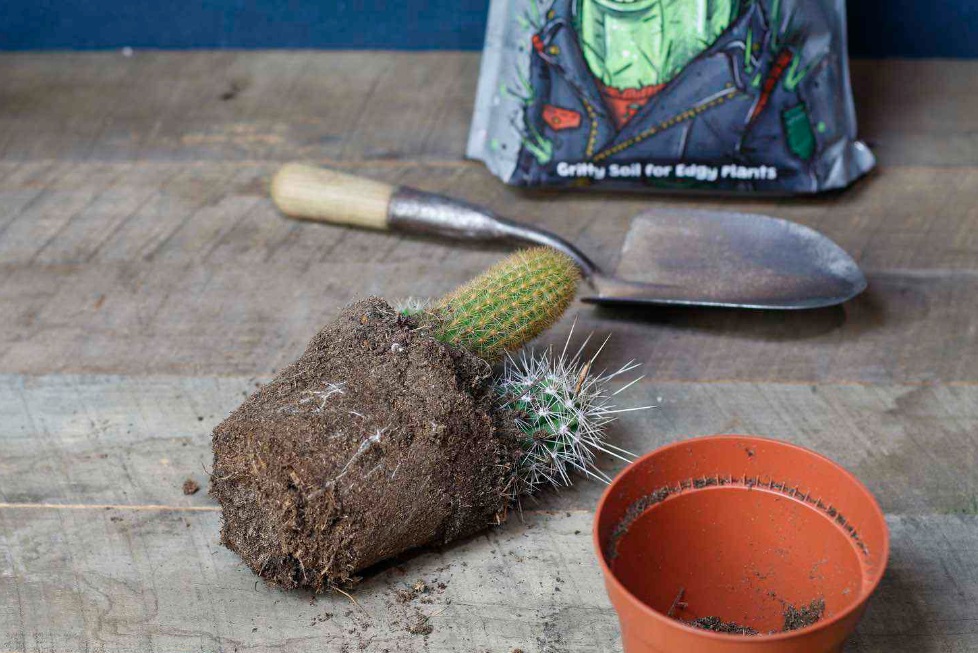
Conclusion
The diverse world of cactus root systems is a testament to nature’s creative problem-solving abilities. From the deep roots of the Saguaro Cactus to the shallow spreaders of the Prickly Pear Cactus, cacti roots have evolved strategies for survival that go beyond the ordinary.
Understanding the intricacies of cactus roots not only deepens our appreciation for the natural world but also offers insights into how we can navigate the challenges of the environment with resilience and grace.
Read Also: What Do Cactus Roots Look Like?

Greetings, dear succulent lovers! I’m Jennifer West and I’m happy to share with you practical tips and guides on growing and caring for succulents, as well as all the magical facts about these unique plants. Grateful to have you on this green journey with me! Check out more about our team here.

